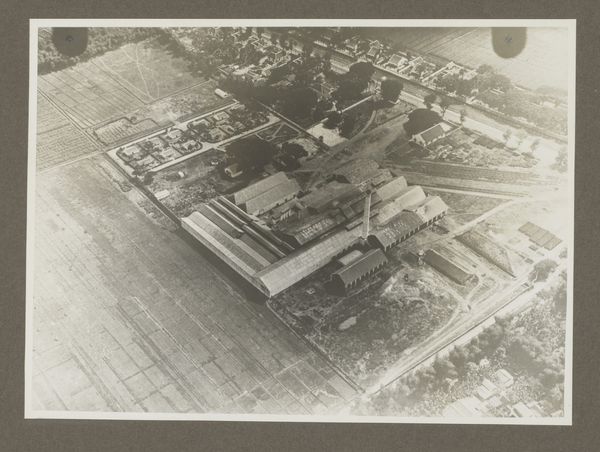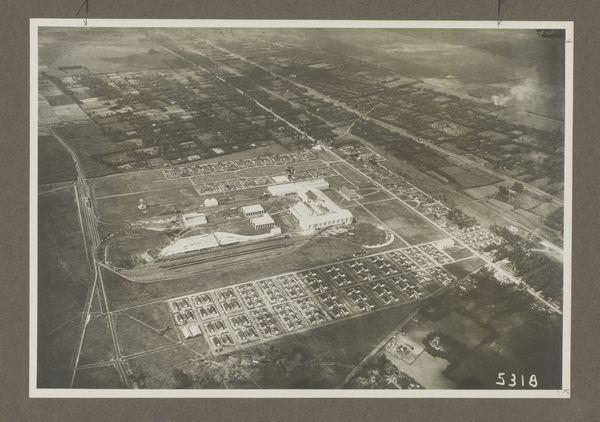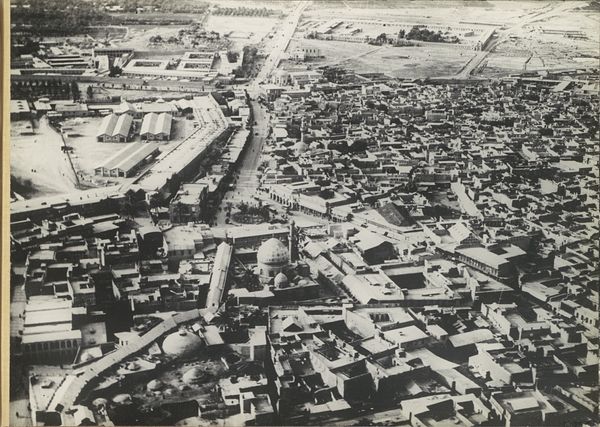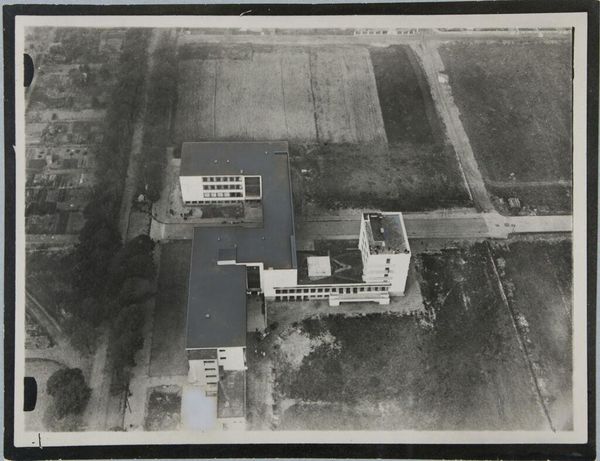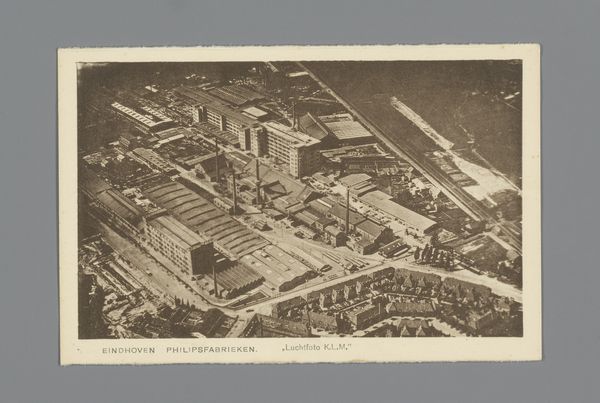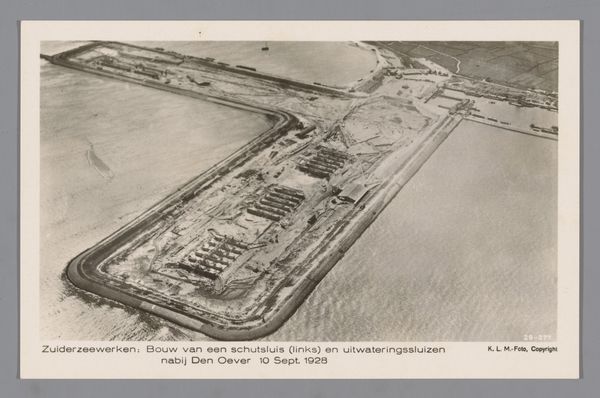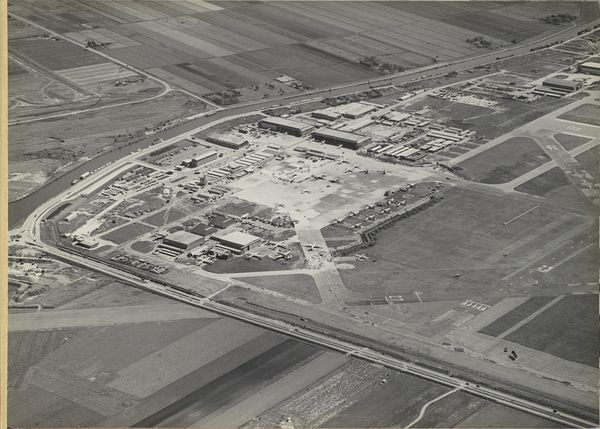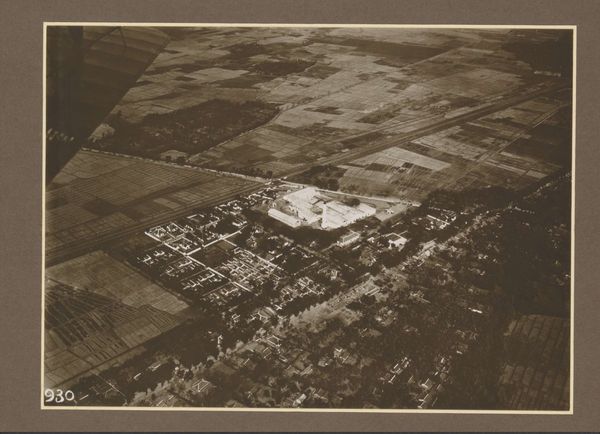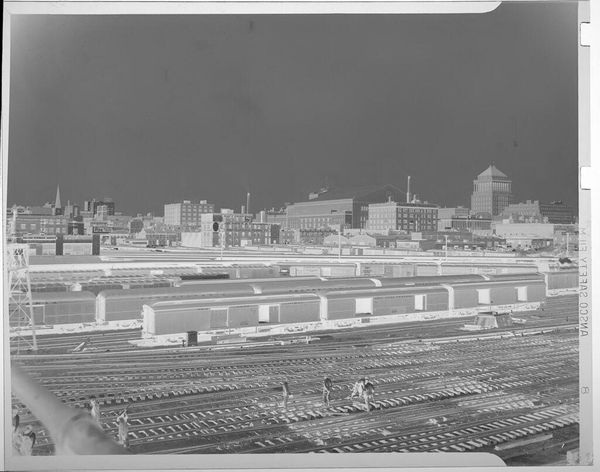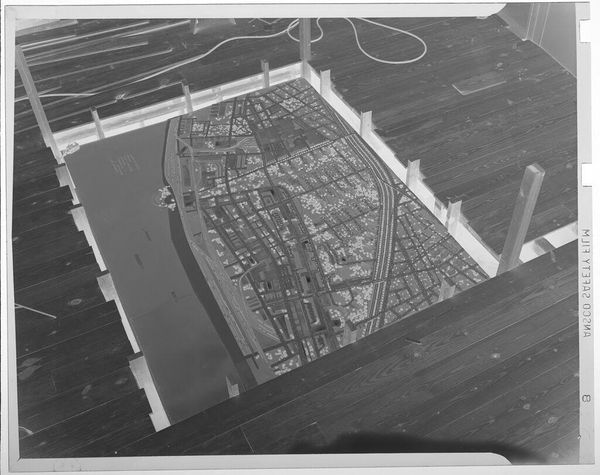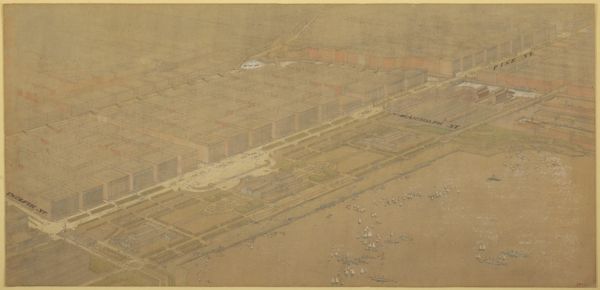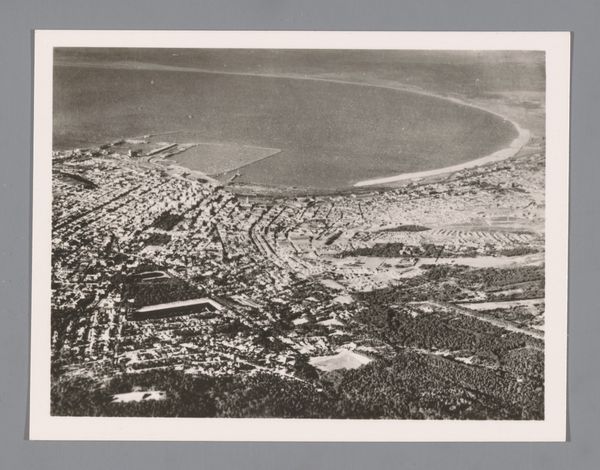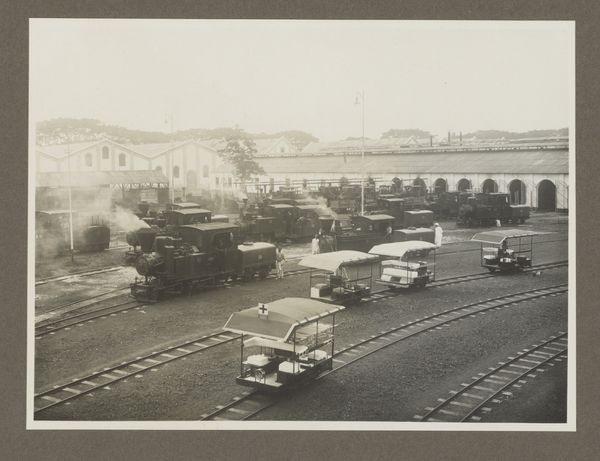
photography, architecture
#
photography
#
cityscape
#
modernism
#
architecture
Dimensions: height 152 mm, width 224 mm
Copyright: Rijks Museum: Open Domain
Curator: What a stark image. It’s almost unsettling, the way the factory dominates the landscape. Editor: It's "Machinefabriek Braat vanuit de lucht," a 1929 photograph attributed to Atelier Umbgrove. And, yes, there's something inherently alienating about it – this industrial leviathan positioned between nature and nascent domesticity. The black and white enhances the harsh geometry. Curator: Right. Considering this photograph within the trajectory of early 20th-century urbanism and industrial growth is key. We're seeing the rise of factory workforces and the subsequent impact on domestic life, labor conditions, and gender roles within the family structure. Where are the workers here? This perspective reinforces a very distanced, authoritative point of view, don't you think? Editor: Absolutely. From a material perspective, consider the concrete and steel. Mass-produced elements allowed this monolithic form to rise from the land, a physical embodiment of capital and mechanized labor. Look at the scale – how it dwarfs everything. It speaks to a certain ideology of progress, but also environmental control. The photograph itself as document also functions this way. Curator: And think about how this image circulates and perpetuates certain ideologies about industrial power. There is a glorification here, almost as if the factory represents a modernist ideal. Absent from the picture is any acknowledgement of the labour exploitation, the pollution, the social disruption associated with these spaces. Editor: True. The photograph sanitizes the means of production, focusing on form rather than lived realities of workers. It is a product designed to impress, not inform. The way the factory meets the canal hints at ease of transport, facilitating an unhindered flow of raw materials in, finished goods out. Curator: Understanding that deliberate choice is vital, so viewers can critique the inherent power structures this photograph helps maintain. It isn’t just a pretty picture; it's an ideological statement about who controls the means of production and how this power is visualized and therefore legitimized. Editor: I think that reading of the photograph brings to the foreground the tangible ways these structures and the capital investments that enabled their creation impact communities even today. We still inherit the legacy of places like these.
Comments
No comments
Be the first to comment and join the conversation on the ultimate creative platform.
